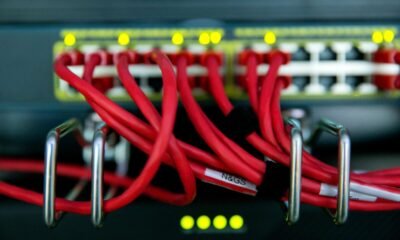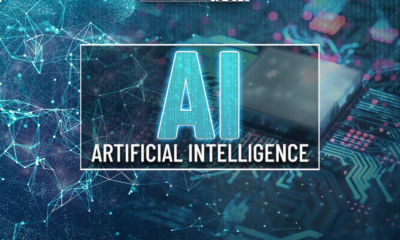AI Insights
AI drives rally in software, led by MongoDB, Pure Storage, Snowflake
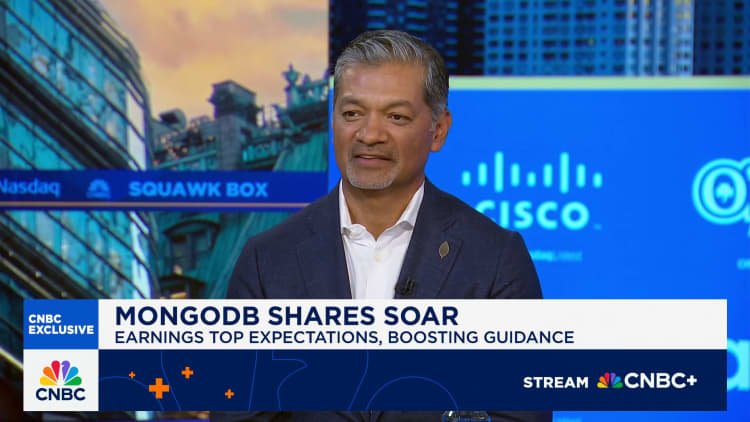
A banner for Snowflake Inc. is displayed at the New York Stock Exchange to celebrate the company’s initial public offering on Sept. 16, 2020.
Brendan McDermid | Reuters
MongoDB’s stock just closed out its best week on record, leading a rally in enterprise technology companies that are seeing tailwinds from the artificial intelligence boom.
In addition to MongoDB’s 44% rally, Pure Storage soared 33%, its second-sharpest gain ever, while Snowflake jumped 21%. Autodesk rose 8.4%.
Since generative AI started taking off in late 2022 following the launch of OpenAI’s ChatGPT, the big winners have been Nvidia, for its graphics processing units, as well as the cloud vendors like Microsoft, Google and Oracle, and companies packaging and selling GPUs, such as Dell and Super Micro Computer.
For many cloud software vendors and other enterprise tech companies, Wall Street has been waiting to see if AI will be a boon to their business, or if it might displace it.
Quarterly results this week and commentary from company executives may have eased some of those concerns, showing that the financial benefits of AI are making their way downstream.
MongoDB CEO Dev Ittycheria told CNBC’s “Squawk Box” on Wednesday that enterprise rollouts of AI services are happening, but slowly.
“You start to see deployments of agents to automate back office, maybe automate sales and marketing, but it’s still not yet kind of full force in the enterprise,” Ittycheria said. “People want to see some wins before they deploy more investment.”
Revenue at MongoDB, which sells cloud database services, rose 24% from a year earlier to $591 million, sailing past the $556 million average analyst estimate, according to LSEG. Earnings also exceeded expectations, as did the company’s full-year forecast for profit and revenue.
MongoDB said in its earnings report that it’s added more than 5,000 customers year-to-date, “the highest ever in the first half of the year.”
“We think that’s a good sign of future growth because a lot of these companies are AI native companies who are coming to MongoDB to run their business,” Ittycheria said.
Pure Storage enjoyed a record pop on Thursday, when the stock jumped 32% to an all-time high.
The data storage management vendor reported quarterly results that topped estimates and lifted its guidance for the year. But what’s exciting investors the most is early returns from Pure’s recent contract with Meta. Pure will help the social media company manage its massive storage needs efficiently with the demands of AI.
Pure said it started recognizing revenue from its Meta deployments in the second quarter, and finance chief Tarek Robbiati said on the earnings call that the company is seeing “increased interest from other hyperscalers” looking to replace their traditional storage with Pure’s technology.
‘Banger of a report’
Reports from MongoDB and Pure landed the same week that Nvidia announced quarterly earnings, and said revenue soared 56% from a year earlier, marking a ninth-straight quarter of growth in excess of 50%.
Nvidia has emerged as the world’s most-valuable company by selling advanced AI processors to all of the infrastructure providers and model developers.
While growth at Nvidia has slowed from its triple-digit rate in 2023 and 2024, it’s still expanding at a much faster pace than its megacap peers, indicating that there’s no end in sight when it comes to the expansive AI buildouts.
“It was a banger of a report,” said Brad Gerstner CEO of Altimeter Capital, in an interview with CNBC’s “Halftime Report” on Thursday. “This company is accelerating at scale.”
Data analytics vendor Snowflake talked up its Snowflake AI data cloud in its quarterly earnings report on Wednesday.
Snowflake shares popped 20% following better-than-expected earnings and revenue. The company also boosted its guidance for the year for product revenue, and said it has more than 6,100 customers using Snowflake AI, up from 5,200 during the prior quarter.
“Our progress with AI has been remarkable,” Snowflake CEO Sridhar Ramaswamy said on the earnings call. “Today, AI is a core reason why customers are choosing Snowflake, influencing nearly 50% of new logos won in Q2.”
Autodesk, founded in 1982, has been around much longer than MongoDB, Pure Storage or Snowflake. The company is known for its AutoCAD software used in architecture and construction.
The company has underperformed the broader tech sector of late, and last year activist investor Starboard Value jumped into the stock to push for improvements in operations and financial performance, including cost cuts. In February, Autodesk slashed 9% of its workforce, and two months later the company settled with Starboard, adding two newcomers to its board.
The stock is still trailing the Nasdaq for the year, but climbed 9.1% on Friday after Autodesk reported results that exceeded Wall Street estimates and increased its full-year revenue guidance.
Last year, Autodesk introduced Project Bernini to develop new AI models and create what it calls “AI‑driven CAD engines.”
On Thursday’s earnings call, CEO Andrew Anagnost was asked what he’s most excited about across his company’s product portfolio when it comes to AI.
Anagnost touted the ability of Autodesk to help customers simplify workflow across products and promoted the Autodesk Assistant as a way to enhance productivity through simple prompts.
He also addressed the elephant in the room: The existential threat that AI presents.
“AI may eat software,” he said, “but it’s not gonna eat Autodesk.”
WATCH: Autodesk CEO on Q2 earnings
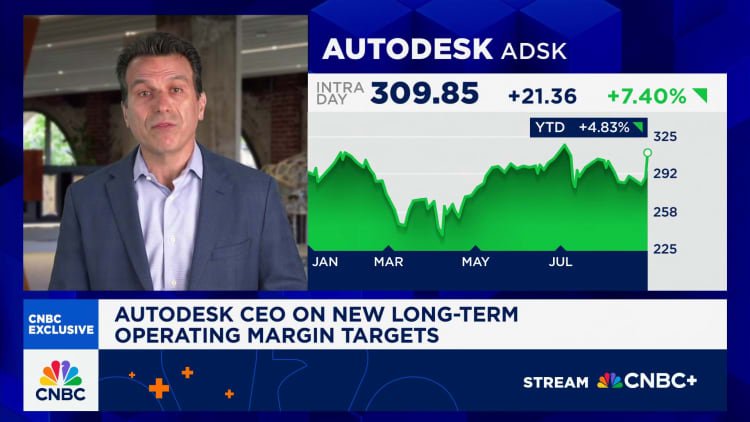
AI Insights
Prediction: This Monster Artificial Intelligence (AI) Chip Stock Will Soar in September (Hint: It’s Not Nvidia)
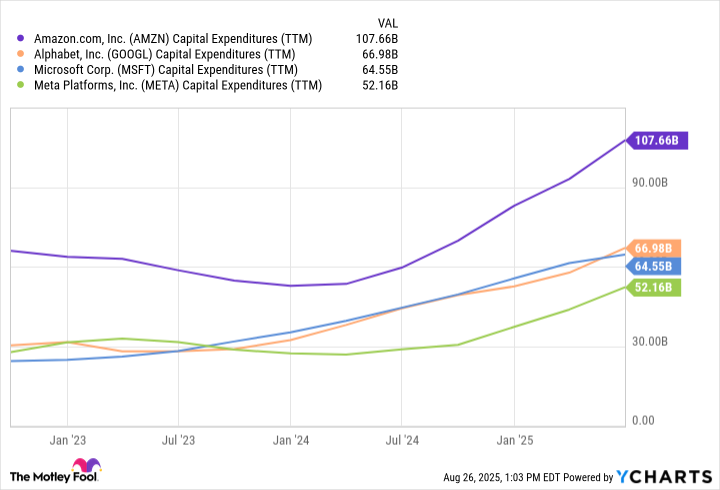
Broadcom is scheduled to report earnings on Sept. 4.
Over the past several weeks, investors have been bombarded with a wave of updates as companies reported earnings results for the second calendar quarter. For technology investors, artificial intelligence (AI) remains the dominant theme fueling the sector higher.
As I write this (mid-day on Aug. 27), all of the “Magnificent Seven” have posted earnings — with the lone exception being Nvidia (NVDA -3.38%), which reports later today. Still, the breadcrumbs left by big tech point to an undeniable trend: Spending on AI infrastructure is accelerating.
While this is undeniably bullish for graphics processing unit (GPU) leaders like Nvidia and Advanced Micro Devices, it also creates a powerful tailwind for systems integration specialist Broadcom (AVGO -3.70%).
With Broadcom slated to report earnings on Sept. 4, I predict the stock is well-positioned to rally.
Let’s explore why I’m optimistic about Broadcom’s upcoming earnings report, and assess whether the stock is a compelling buy at current levels.
Follow big tech’s breadcrumbs
Global hyperscalers such as Amazon, Alphabet, Microsoft, and Meta Platforms have been spending record sums on capital expenditures (capex) over the last few years. While this clearly bodes well for Nvidia and AMD, Broadcom has also been a quiet beneficiary of rising AI infrastructure investment.
Data by YCharts.
One of Broadcom’s key AI growth drivers comes from its application-specific integrated circuits (ASICs) business. These custom silicon solutions allow customers to design chips that are optimized for their unique workloads.
By integrating purpose-built performance with compute power efficiency, Broadcom’s ASICs help hyperscalers lower their total cost of infrastructure relative to relying solely on off-the-shelf accelerators from the likes of Nvidia. This becomes highly desirable as training and inferencing workloads scale and become increasingly complex as more sophisticated AI use cases unfold.
Broadcom’s networking division is also positioned to benefit materially from the ongoing AI infrastructure cycle. As big tech continues to pour hundreds of billions of dollars annually into GPU deployment, Broadcom’s supporting infrastructure becomes an indispensable unsung hero.
The company’s portfolio of high-performance switches, interconnects, and optical components delivers low-latency, high-bandwidth connectivity to keep next-generation accelerators running at full speed. In essence, the company’s networking gear represents a foundational layer of AI data center construction — ensuring scalability and efficiency as workloads expand.
Image source: Getty Images.
Management likes the stock — shouldn’t you?
With a forward price-to-earnings (P/E) multiple of 45, Broadcom certainly isn’t trading at a discount. In fact, its multiple sits near peak levels seen during the AI revolution.
Data by YCharts.
Even so, the company’s board of directors authorized a $10 billion stock buyback program back in April. Share buybacks at elevated valuations can point to a strong signal: Management remains confident in Broadcom’s long-term growth trajectory, underscored by ongoing hyperscaler investment. On a more subtle note, sometimes companies repurchase their own shares when management thinks the stock is undervalued.
These dynamics could suggest that Broadcom is positioned for sustained, robust earnings growth, which could fuel further valuation expansion — even in the face of a premium multiple.
Is Broadcom stock a buy right now?
For the last few years, the AI trade has largely surrounded Nvidia and the cloud hyperscalers. Yet as infrastructure spending accelerates, the scope of the AI opportunity is broadening to other mission-critical enablers such as Broadcom. Custom chips, high-performance networking equipment, and integrated systems are now just as essential as securing GPUs — and Broadcom sits squarely at this intersection.
In my eyes, Broadcom is approaching its own “Nvidia moment” — a potential inflection where the narrative begins to recognize Broadcom as a supporting pillar of AI infrastructure and not simply an ancillary beneficiary of these tailwinds.
Against this backdrop, I predict that Broadcom’s September earnings report will reinforce its strategic importance in the AI landscape — fueling investor enthusiasm and a further rerating of the stock. For these reasons, I see Broadcom as a compelling opportunity to buy and hold over a long-term time horizon.
Adam Spatacco has positions in Alphabet, Amazon, Meta Platforms, Microsoft, and Nvidia. The Motley Fool has positions in and recommends Advanced Micro Devices, Alphabet, Amazon, Meta Platforms, Microsoft, and Nvidia. The Motley Fool recommends Broadcom and recommends the following options: long January 2026 $395 calls on Microsoft and short January 2026 $405 calls on Microsoft. The Motley Fool has a disclosure policy.
AI Insights
AI Model Betting Is the New Fantasy Football
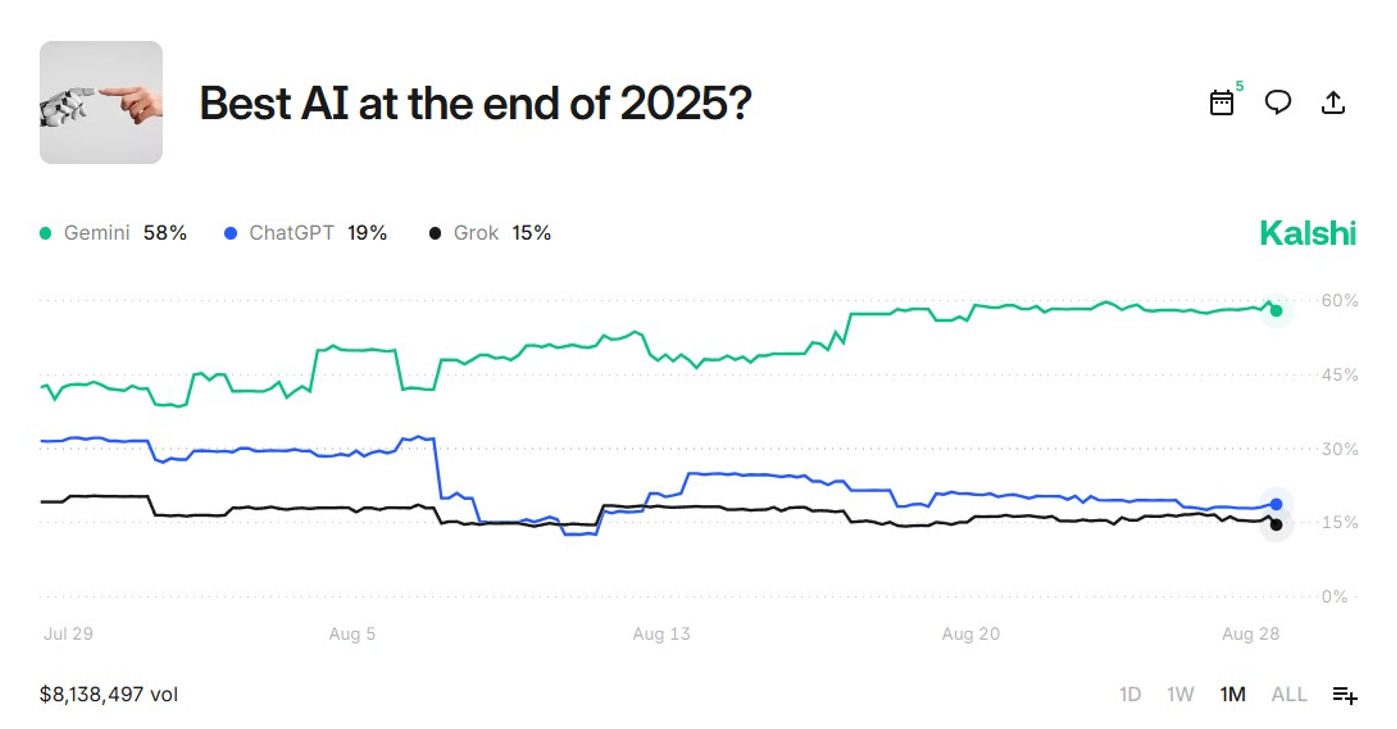
Sports gambling has DraftKings. Political junkies have PredictIt. And now the world’s nerdiest corner — the artificial intelligence (AI) scene — has its own set of bettors, where people wager actual money on whether Google’s Gemini will dunk on OpenAI’s GPT-5 this month.
AI Insights
How Silicon Valley is using religious language to talk about AI
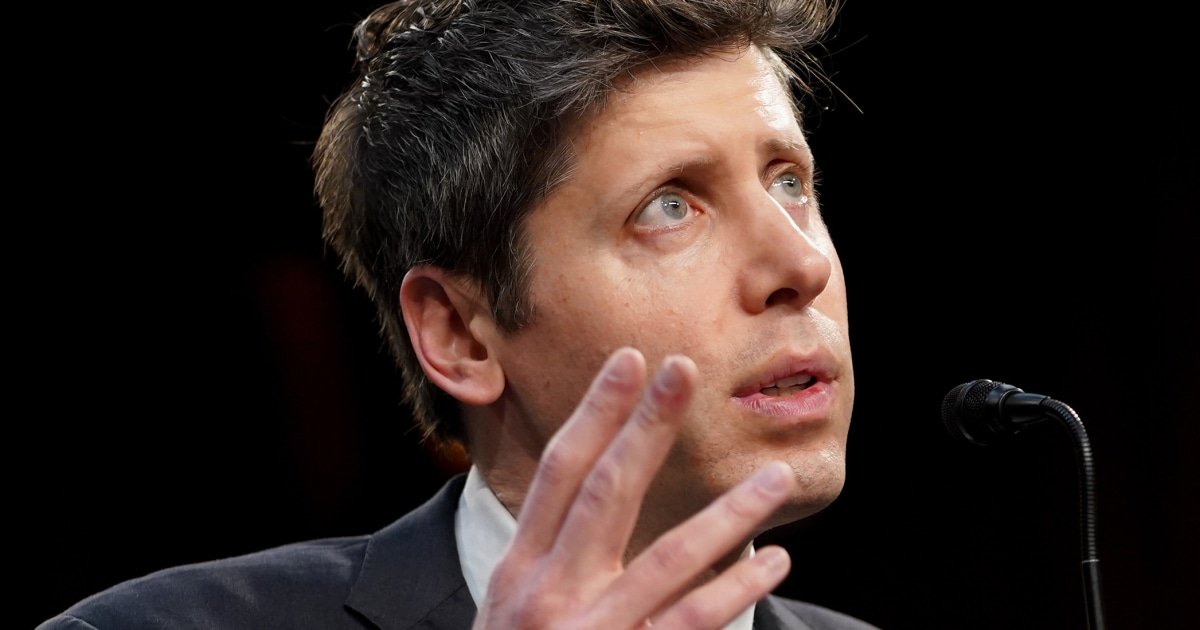
TORONTO — As the rapid, unregulated development of artificial intelligence continues, the language people in Silicon Valley use to describe it is becoming increasingly religious.
From predicting the potential destruction of humanity to a transhumanist apocalypse where people merge with AI, here’s what some of the key players are saying.
___
“I think religion will be in trouble if we create other beings. Once we start creating beings that can think for themselves and do things for themselves, maybe even have bodies if they’re robots, we may start realizing we’re less special than we thought. And the idea that we’re very special and we were made in the image of God, that idea may go out the window.”
— Nobel Prize winner Geoffrey Hinton, often dubbed the “Godfather of AI” for his pioneering work on deep learning and neural networks.
___
“By 2045, which is only 20 years from now, we’ll be a million times more powerful. And we’ll be able to have expertise in every field.”
— author and computer scientist Ray Kurzweil, who believes humans will merge with AI.
___
“There certainly are dimensions of the technology that have become extremely powerful in the last century or two that have an apocalyptic dimension. And perhaps it’s strange not to try to relate it to the biblical tradition.”
— PayPal and Palantir co-founder Peter Thiel speaking to the Hoover Institution at Stanford University.
___
“I feel that the four big AI CEOs in the U.S. are modern-day prophets with four different versions of the Gospel and they’re all telling the same basic story that this is so dangerous and so scary that I have to do it and nobody else.”
— Max Tegmark, a physicist and machine learning researcher at the Massachusetts Institute of Technology.
___
“When people in the tech industry talk about building this one true AI, it’s almost as if they think they’re creating God or something.”
— Meta CEO Mark Zuckerberg on a podcast promoting his company’s own venture into AI.
___
“Everyone (including AI companies!) will need to do their part both to prevent risks and to fully realize the benefits. But it is a world worth fighting for. If all of this really does happen over 5 to 10 years — the defeat of most diseases, the growth in biological and cognitive freedom, the lifting of billions of people out of poverty to share in the new technologies, a renaissance of liberal democracy and human rights — I suspect everyone watching it will be surprised by the effect it has on them.”
— Anthropic CEO Dario Amodei in his essay, “Machines of Loving Grace: How AI Could Transform the World for the Better.”
___
“You and I are living through this once-in-human-history transition where humans go from being the smartest thing on planet Earth to not the smartest thing on planet Earth.”
— OpenAI CEO Sam Altman during an interview for TED Talks.
___
“These really big, scary problems that are complex and challenging to address — it’s so easy to gravitate towards fantastical thinking and wanting a one-size-fits-all global solution. I think it’s the reason that so many people turn to cults and all sorts of really out there beliefs when the future feels scary and uncertain. I think this is not different than that. They just have billions of dollars to actually enact their ideas.”
— Dylan Baker, lead research engineer at the Distributed AI Research Institute.
-
Tools & Platforms3 weeks ago
Building Trust in Military AI Starts with Opening the Black Box – War on the Rocks
-

 Ethics & Policy1 month ago
Ethics & Policy1 month agoSDAIA Supports Saudi Arabia’s Leadership in Shaping Global AI Ethics, Policy, and Research – وكالة الأنباء السعودية
-

 Events & Conferences3 months ago
Events & Conferences3 months agoJourney to 1000 models: Scaling Instagram’s recommendation system
-

 Jobs & Careers2 months ago
Jobs & Careers2 months agoMumbai-based Perplexity Alternative Has 60k+ Users Without Funding
-

 Funding & Business2 months ago
Funding & Business2 months agoKayak and Expedia race to build AI travel agents that turn social posts into itineraries
-

 Education2 months ago
Education2 months agoVEX Robotics launches AI-powered classroom robotics system
-

 Podcasts & Talks2 months ago
Podcasts & Talks2 months agoHappy 4th of July! 🎆 Made with Veo 3 in Gemini
-

 Podcasts & Talks2 months ago
Podcasts & Talks2 months agoOpenAI 🤝 @teamganassi
-

 Mergers & Acquisitions2 months ago
Mergers & Acquisitions2 months agoDonald Trump suggests US government review subsidies to Elon Musk’s companies
-

 Jobs & Careers2 months ago
Jobs & Careers2 months agoAstrophel Aerospace Raises ₹6.84 Crore to Build Reusable Launch Vehicle














